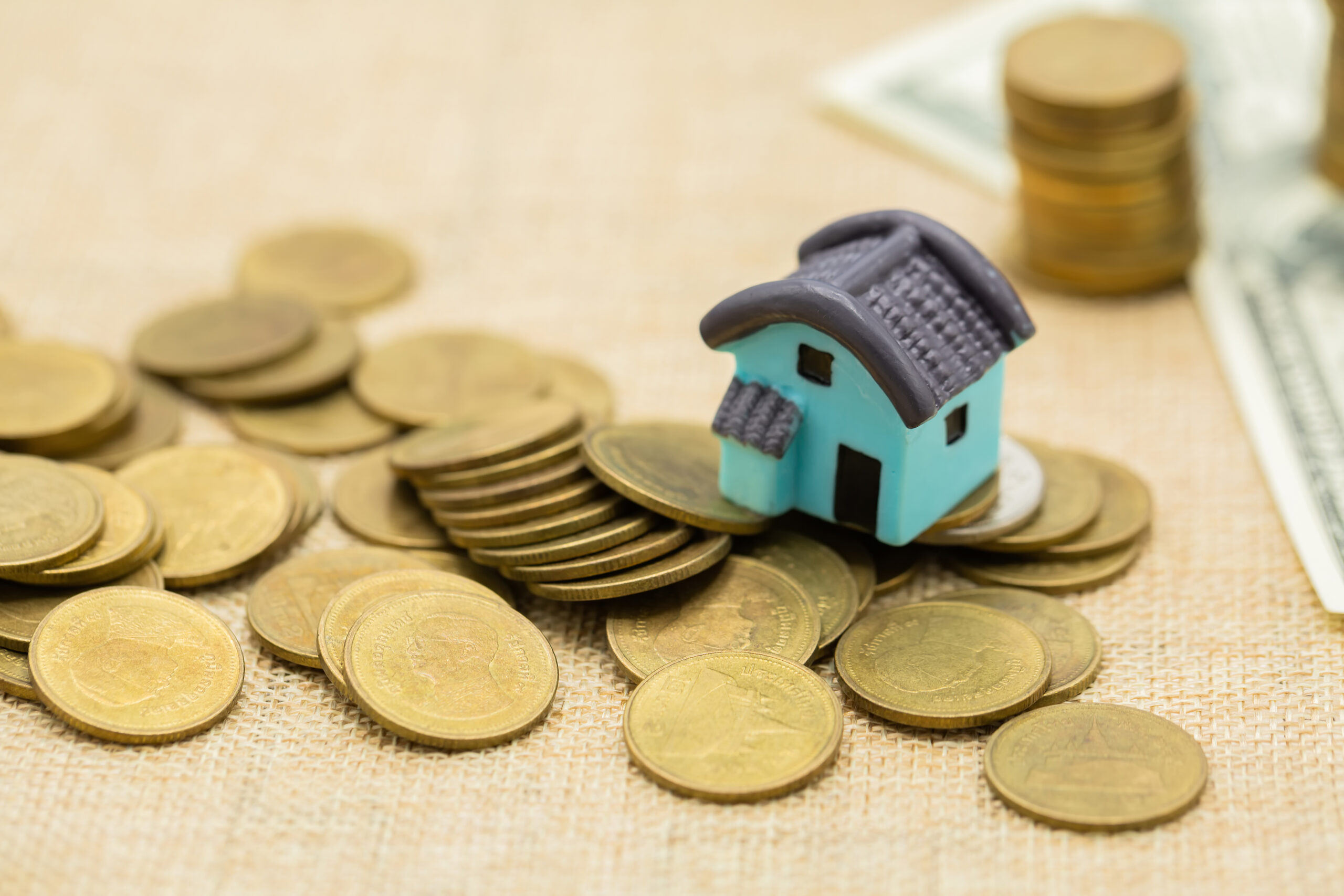A Home Equity Line of Credit (HELOC) can be an attractive option for homeowners looking to tap into the equity they’ve built in their homes. It offers flexibility, lower interest rates compared to credit cards or personal loans, and the ability to borrow money as needed. However, like any financial strategy, it comes with its risks, especially if not managed carefully.
As you consider a HELOC mortgage strategy, it’s crucial to understand the potential dangers involved and how to protect yourself from them. In this article, we’ll explore the risks associated with HELOC mortgages and provide effective strategies to minimize those risks.
Want to learn how to pay off your mortgage faster, build cash flow, and eliminate debt?
Join The 5-Day “Cashflow Empire Live” and create a custom 5-year mortgage payoff plan.
What Are the Risks Involved with HELOC Mortgages?
Understanding the potential risks of using a HELOC is the first step toward managing them effectively. Here are the key risks that homeowners should be aware of when utilizing this financial tool:
Variable Interest Rates and Their Impact
One of the primary characteristics of HELOCs is their variable interest rates. While this can result in a lower rate initially, it means your payments could increase significantly if the interest rates rise. This unpredictability can be a serious financial burden if rates climb unexpectedly, especially if you’re already stretching your budget.
For example, imagine you take out a HELOC with an interest rate of 3.5%. Over time, interest rates rise to 6%, meaning your monthly payments could double, putting additional pressure on your finances. As you borrow more, the payments become more difficult to manage.
What Can You Do?
To avoid this risk, consider switching to a fixed-rate HELOC or a hybrid option that locks in a portion of your interest rate. If you decide to stick with a variable-rate option, ensure you budget for possible rate increases.
Falling Home Values Can Increase Your Risk
Another risk of a HELOC is that it is tied to the value of your home. If the housing market experiences a downturn, the value of your property may decrease, leaving you with less equity than you initially had. In the worst-case scenario, you could owe more than the value of your home, leaving you “underwater” on your mortgage.
For instance, if your home was appraised at $300,000 when you took out your HELOC, but its value drops to $250,000 due to market fluctuations, your loan may exceed the worth of your property. This could prevent you from refinancing or selling without incurring a loss.
What Can You Do?
To mitigate this risk, regularly monitor your home’s value and the local real estate market. If you’re considering selling, make sure you have enough equity to cover your mortgage balance.
Risk of Overextending Your Borrowing Capacity
It can be easy to get carried away when borrowing against the equity in your home. However, borrowing too much can result in mounting debt that’s hard to manage. It’s important to remember that HELOCs are revolving lines of credit, which means you can continue to borrow up to your credit limit, but that doesn’t necessarily mean you should.
Taking on excessive debt may lead to financial strain and, in the worst-case scenario, foreclosure if you’re unable to make your payments. It’s essential to establish clear boundaries on how much you borrow and ensure you’re able to repay it.
What Can You Do?
Set a realistic borrowing limit that aligns with your income and future financial goals. Use your HELOC for strategic purposes, such as home improvements that increase property value or consolidating higher-interest debt, rather than as a general spending tool.
How to Minimize Risks with HELOC Mortgage Strategies
While HELOCs can be risky, there are several strategies you can employ to minimize those risks and use this financial tool responsibly.
Set a Realistic Borrowing Limit and Stick to It
One of the first steps in minimizing the risks associated with HELOCs is to set a realistic borrowing limit. You should avoid borrowing the maximum amount available, especially if it puts you at risk of overspending or stretching your finances too thin.
How to Determine Your Borrowing Limit?
Consider your current financial situation, including your monthly income, debts, and living expenses. Make sure that the additional loan payments from your HELOC won’t strain your budget. It’s also wise to consider your long-term financial plans and avoid taking on more debt than you can comfortably repay.
Setting a borrowing limit will help you avoid the temptation of overextending yourself financially. It’s crucial to align your borrowing with your ability to repay.
Choose a Fixed-Rate HELOC or Consider a Hybrid Option
While variable-rate HELOCs can be tempting due to lower initial interest rates, they carry the risk of rising payments in the future. To avoid the uncertainty that comes with variable interest rates, consider switching to a fixed-rate HELOC or even a hybrid option.
A fixed-rate HELOC locks in a specific interest rate, ensuring predictable payments throughout the loan term. This is particularly beneficial for homeowners who want to avoid surprises or have a fixed budget.
A hybrid HELOC offers a combination of both variable and fixed rates. This can give you the flexibility of a variable rate at the beginning of the loan, but with the option to switch to a fixed rate later.
The Bottom Line:
Choosing a fixed-rate or hybrid option provides peace of mind, especially in uncertain economic times. If you can afford the slightly higher initial rate, it may be worth it for the predictability.
Plan for Rate Changes and Interest Rate Caps
If you opt for a variable-rate HELOC, it’s important to plan for potential rate increases. A sudden rise in interest rates could lead to an unexpected spike in your payments, so it’s essential to budget accordingly.
In addition, many HELOCs come with interest rate caps that limit how high the rate can go. Be sure to understand the terms of your HELOC, including any rate caps, so you’re not caught off guard by significant rate hikes.
How to Prepare for Rate Changes?
Build a financial cushion to absorb potential increases in payments. If your HELOC is tied to a variable rate, prepare for the worst-case scenario where rates could increase, and adjust your budget to reflect higher monthly payments.
Regularly Review Your HELOC Terms and Equity Position
Your financial situation and the value of your home may change over time. It’s important to regularly review your HELOC terms and your equity position to ensure you’re still on track with your mortgage strategy.
If your home’s value has increased, you may be able to refinance for better terms. Conversely, if your home’s value has decreased, you might want to explore other options before taking on more debt.
How to Stay on Top of Your HELOC?
Schedule regular check-ins with your lender or financial advisor to evaluate the terms of your HELOC and assess your home’s equity. This will help you identify any changes that could affect your ability to manage the loan effectively.
Want to learn how to pay off your mortgage in 5 years or less without changing your budget?
Join The 5-Day “Cashflow Empire Live” and create a custom 5-year mortgage payoff plan.
Additional Tips for Managing Your HELOC Responsibly
Beyond the core strategies, here are some additional tips for managing your HELOC responsibly and minimizing the risks involved.
Create a Realistic Repayment Plan
A strong repayment plan is crucial for ensuring that your HELOC doesn’t become a burden. Unlike traditional mortgages, which are paid down in fixed installments, HELOCs typically require interest-only payments during the draw period, with the principal due later.
Creating a budget that includes regular principal payments will help you reduce your debt over time and prevent interest from accumulating.
Tips for Repayment:
- Allocate a specific portion of your monthly budget to repaying your HELOC principal.
- Avoid relying solely on the draw period—make regular payments towards your loan balance.
- If possible, pay more than the minimum payment to reduce the total interest you’ll pay over time.
Use HELOC Funds Strategically
One of the key reasons to use a HELOC is for strategic purposes, such as funding home improvements, consolidating debt, or financing major life events. However, it’s essential to avoid using the funds for non-essential purchases like vacations or luxury items.
Smart Ways to Use Your HELOC:
- Home Improvements: Renovations or upgrades that increase the value of your home.
- Debt Consolidation: Paying off higher-interest credit cards or loans with a lower-interest HELOC.
- Education Expenses: If you’re paying for tuition, HELOCs can offer lower rates than student loans.
By using your HELOC responsibly, you can make improvements to your home or consolidate debt without jeopardizing your financial future.
Monitor Your Credit and Debt-to-Income Ratio
Your credit score and debt-to-income (DTI) ratio play an important role in the terms you receive for a HELOC. A higher credit score typically results in lower interest rates and better borrowing terms, while a higher DTI ratio can make it more difficult to qualify for a loan.
How to Improve Your Credit and DTI?
- Make sure to pay your bills on time and avoid taking on excessive debt.
- Keep your credit utilization low and your debt-to-income ratio in check.
- Consider paying down high-interest credit cards or loans to improve your overall financial picture.
By focusing on your credit health, you’ll be in a stronger position to negotiate favorable HELOC terms.
FAQ:
What are the main risks of a HELOC mortgage?
The primary risks of a HELOC mortgage include variable interest rates, declining home values, and overextending your borrowing capacity.
Can I convert my HELOC to a fixed rate?
Yes, many HELOC lenders allow you to convert to a fixed-rate option, which can provide more stability.
How can I protect myself from rising interest rates with a HELOC?
You can either choose a fixed-rate HELOC or ensure that your budget accounts for potential rate increases.
What should I do if my home value decreases while I have a HELOC?
Regularly monitor your home’s value, and if it decreases significantly, consider refinancing or paying down the debt to maintain equity.
Conclusion: Take Control of Your HELOC Strategy
While HELOCs offer a great way to leverage your home’s equity, it’s important to understand the risks involved and take steps to protect yourself. By setting realistic borrowing limits, choosing the right type of HELOC, and monitoring your financial situation, you can minimize these risks and use a HELOC as a valuable tool in your mortgage strategy.
Want to learn how to pay off your mortgage in 5 years or less without changing your budget?
Join The 5-Day “Cashflow Empire Live” and create a custom 5-year mortgage payoff plan.
By taking proactive steps and understanding your HELOC mortgage strategy, you can protect yourself from common pitfalls and build a secure financial future.
Affiliate Disclaimer: BestMortgages.co may include affiliate links, which allow us to earn a small commission when you make a purchase through them. This helps support our site at no extra cost to you. Thank you for your support!




0 Comments